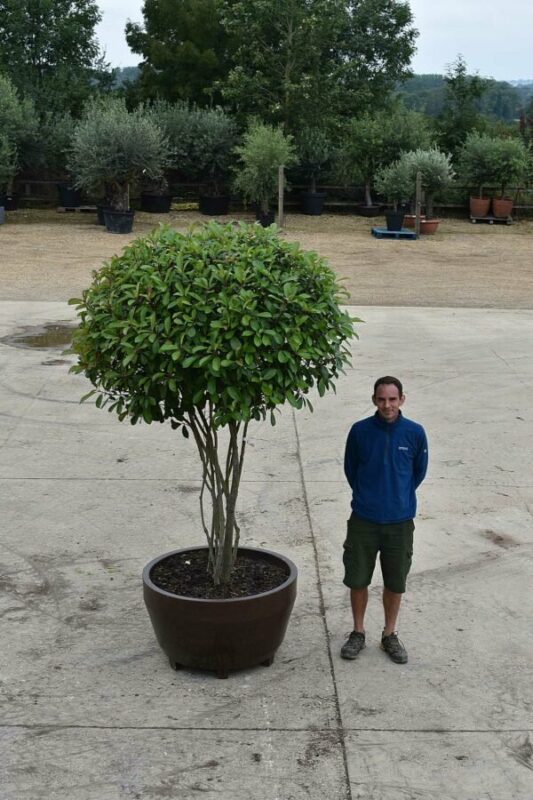No products in the basket.
To create the highly-prized shapes that topiaries are famous for, only a few plants make the cut. Find out what these are and how to choose the right one for your garden in this guide.
Choosing topiary trees for beginners
First things first, topiaries must be evergreen. That’s because evergreen plants maintain their leaves all year. The deciduous trees, on the other hand, drop their leaves in the autumn. From there, you should get to know the various styles, sizes and shapes that are available. Discover some of the best-selling varieties below.
Photinia Red Robin Topiaries

Potted Photinia ‘Red Robin’ Multistem No. 393
We love the name and look of this plant. The Red Robin gets its name from its gorgeous, shiny-red tinted leaves in spring and summer. It’s a great way to add a sophisticated, fiery appearance against the cooler green shades in your garden. As for their shape, they make a great formal geometric hedge, or can be potted with a circular or oval cloud.
Why choose the Red Robin?
- Affordable and easy to maintain
- Can withstand British winters when mature (stays hardy even between -15 and -10°C!)
- They love the sun, but partial shade is also fine.
Which Red Robin should you choose?
There are various varieties for you to choose from. Your choice may boil down to what looks best, or you might want one that requires the least effort to maintain its shape.
Let’s look at your options:
The traditional Red Robin is the most common option and can grow as high as six metres. However, if you want something smaller, we recommend the Little Red Robin or the Red Robin Compacta. The latter variety will grow to two metres and have even brighter red leaves for you to enjoy.
Whether you want a small or large statement piece for your garden, browse your options.
Cupressus Goldcrest Topiaries

x4 Potted Cupressus Goldcrest Spiral
The Cupressus is ideal for fashioning into a neat spiral. They’re fantastic for placing at door entrances, to line pathways or as a statement piece in your garden. It thrives in sunny, warm areas with well-drained soil.
Why choose the Cupressus Goldcrest?
This evergreen conifer is a popular choice for gardens due to its year-round, bright lime-yellow foliage, upright narrow shape and low maintenance requirements.
- Suitable for hedging, screening and as an architectural plant in various garden types.
- Can tolerate dry conditions once established.
- It requires minimal pruning and can be left to grow naturally or pruned in late spring to control its height and spread.
We hope this guide has given you some food for thought on which topiaries would work for your garden design. Shop exquisite topiaries online at Olive Grove today for inspiration.

